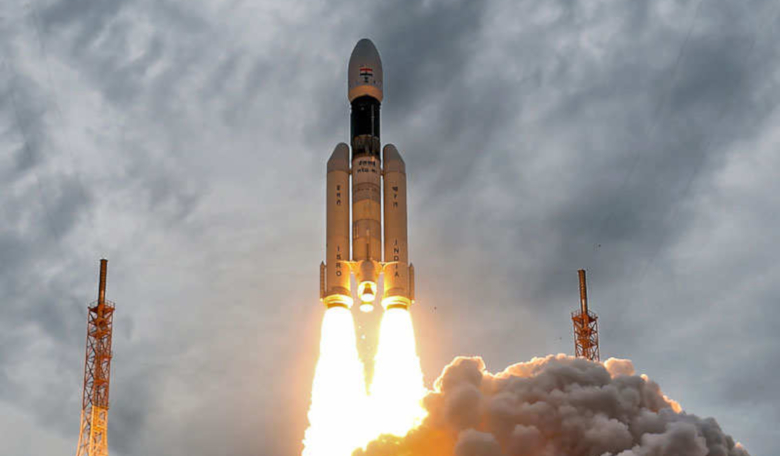Despite setbacks last week which prevented the launch of their Moon mission, India has today successfully blasted a rocket into space carrying Chandrayaan-2 from the country’s Sriharikota space station.
The lift-off took place at 14:43 local time (09:13 GMT) and was broadcast live on TV and the space agency's official social media accounts.
Staff within the Indian Space Research Organisation (ISRO) control room broke into applause after the launch and a few minutes later upon hearing that the orbiter had broken away from the rocket with no known problems.
"Today is a historic day for space, science and tech in India," Indian Space Research Organisation (ISRO) chief K. Sivan said.
It is historic not just for the fact that India will join the elite ranks of Russia, US and China, to become only the fourth nation in the world to land a spacecraft on the Moon, if the country succeeds in its objective. But also because this Moon mission is being led by two women - Muthaya Vanitha, the project director, and Ritu Karidhal, the mission director – a first for India's space programme.
"We are so proud of our sister,” Ritu's sister Varsha told the Economic times of India. “After our parents' demise, she is the eldest in the family and has been a mother figure to me and my brother Rohit," she said. “Didi (Ritu) was always fond of stars and would lie awake staring at the sky. We belong to a middle class family but Didi always yearned to go beyond the limits," Varsha recalled.
Chandrayaan-2 consists of a an orbiter, a lander and a rover, most of which has been designed and made in India for a price tag of around $140 million.
“Indian at heart, Indian in spirit! What would make every Indian overjoyed is the fact that #Chandrayaan2 is a fully indigenous mission,” said Prime Minister of India, Narendra Modi via Twitter.
This paltry figure, by usual space industry standards, is a fraction of the cost other countries have spent on preparing for the mission. The US for instance paid out the equivalent of more than $100 billion on its Apollo missions.
Before India can lay claim to landing on the Moon however, there are a few boxes left to tick. Currently orbiting Earth, the spacecraft will continue to circle our planet for 23 days before it begins a series of manoeuvres that will take it into lunar orbit.
The 2,379 kilogram (5,300 lb) orbiter has a mission life of a year and is expected to circle the Moon searching for water, take images of the surface, and measure moonquakes, among other things.
The lander—named after Vikram A. Sarabhai, who is widely regarded as the father of India's space programme—will try to land near the little-explored lunar south pole between two craters, Manzinus C and Simpelius N, and carry out scientific activities for approximately 15 days.
Meanwhile, the wheeled rover stowed aboard – called Pragyan – will perform on-site chemical analysis up to a half a kilometre from the lander. Any data it collects as it ambles around the Moon’s surface can be relayed back to Earth via the Chandrayaan-2 orbiter and lander.
Operations are still expected to begin in early September, despite the week-long delay of the launch. Although the Apollo 11 mission took just 4 days to reach the Moon, India's Geosynchronous Satellite Launch Vehicle Mark III (GSLV Mk-III) used in the launch, cannot thrust Chandrayaan-2 straight to our nearest celestial neighbour. Instead the spacecraft will save fuel by looping around Earth and using our planet’s gravity to fling it towards its destination.











